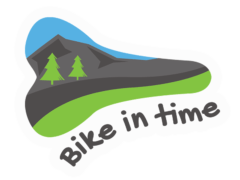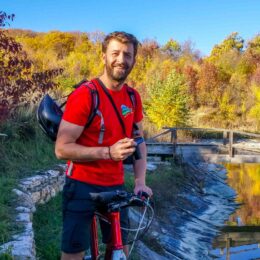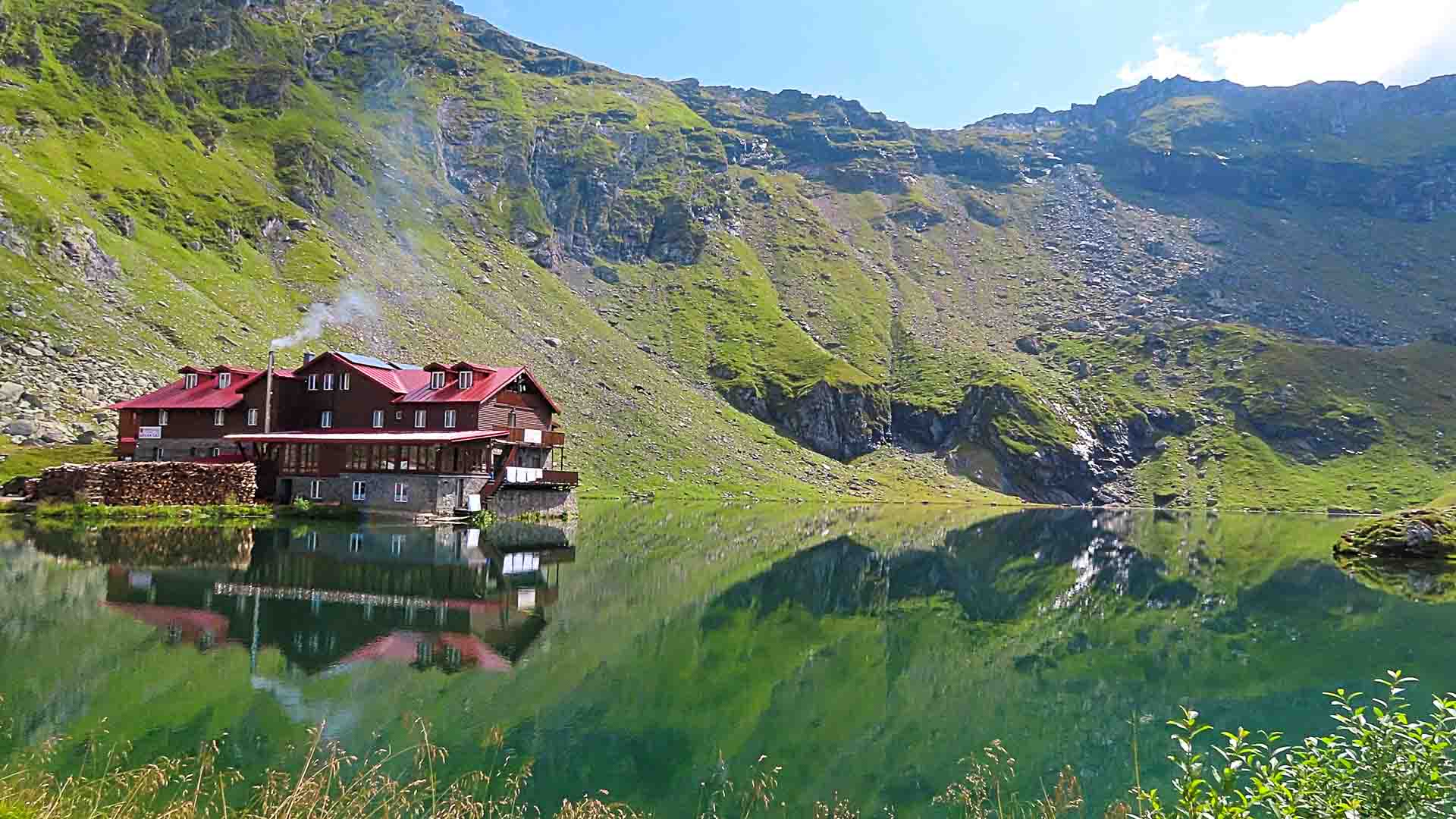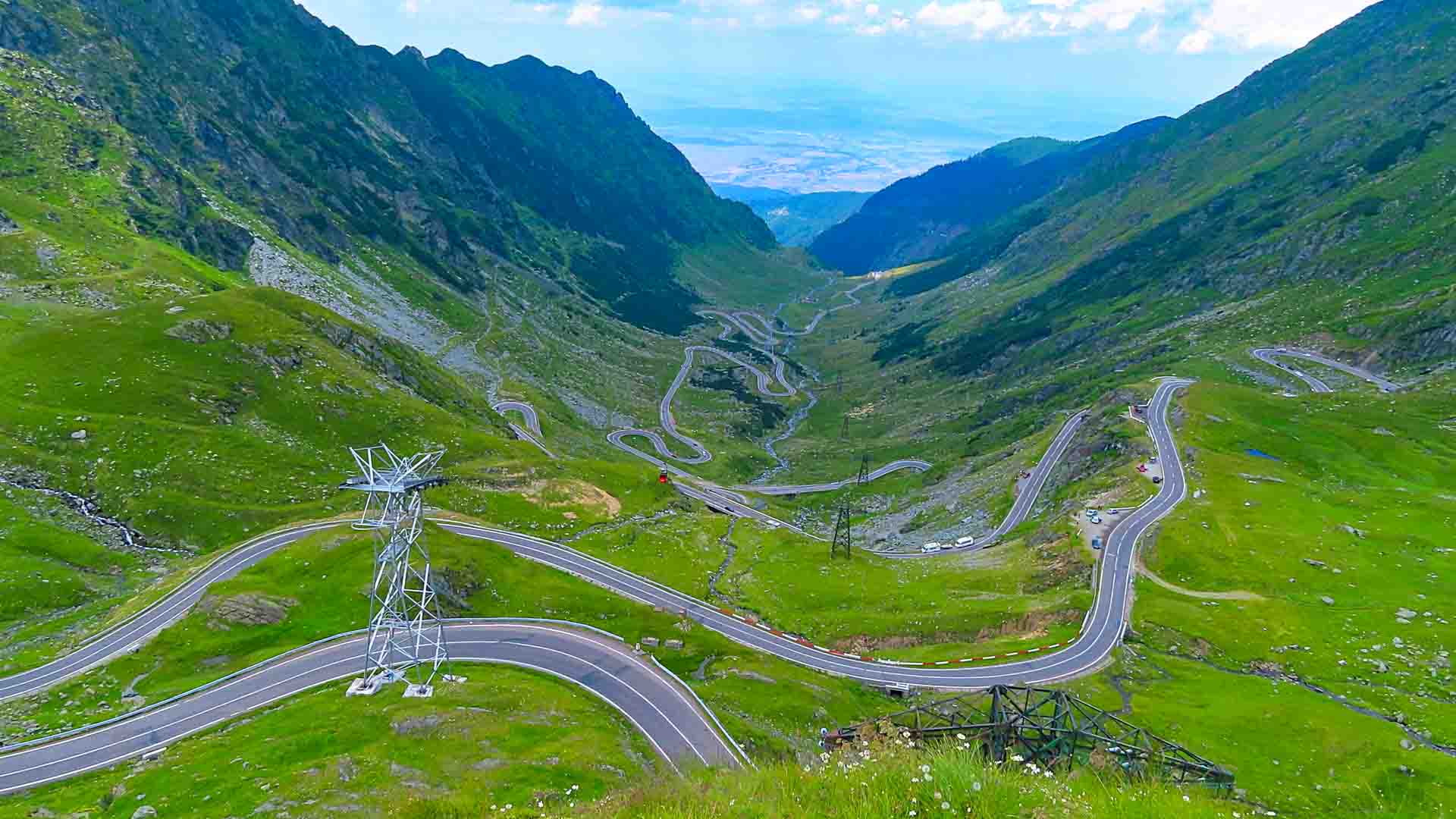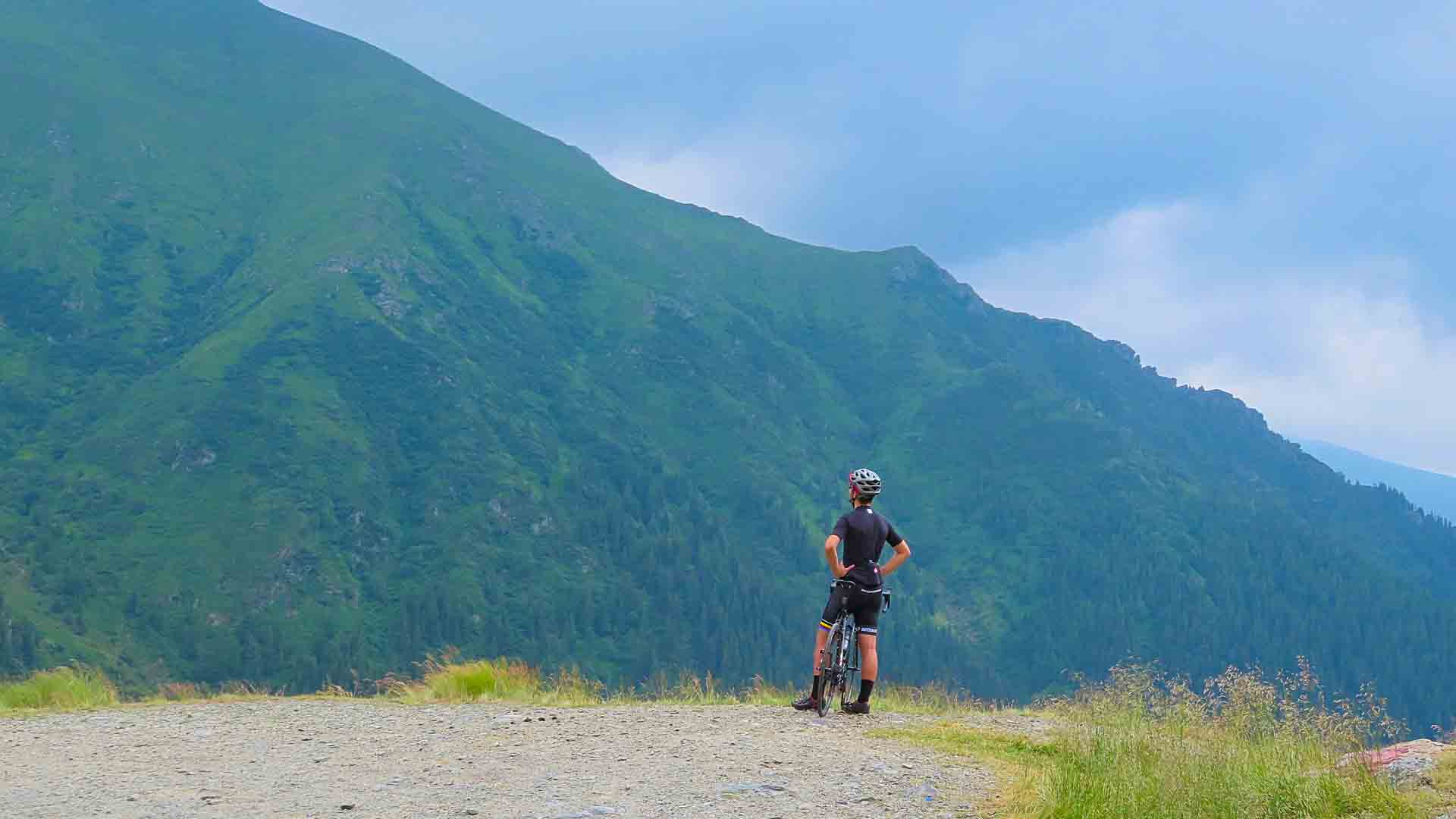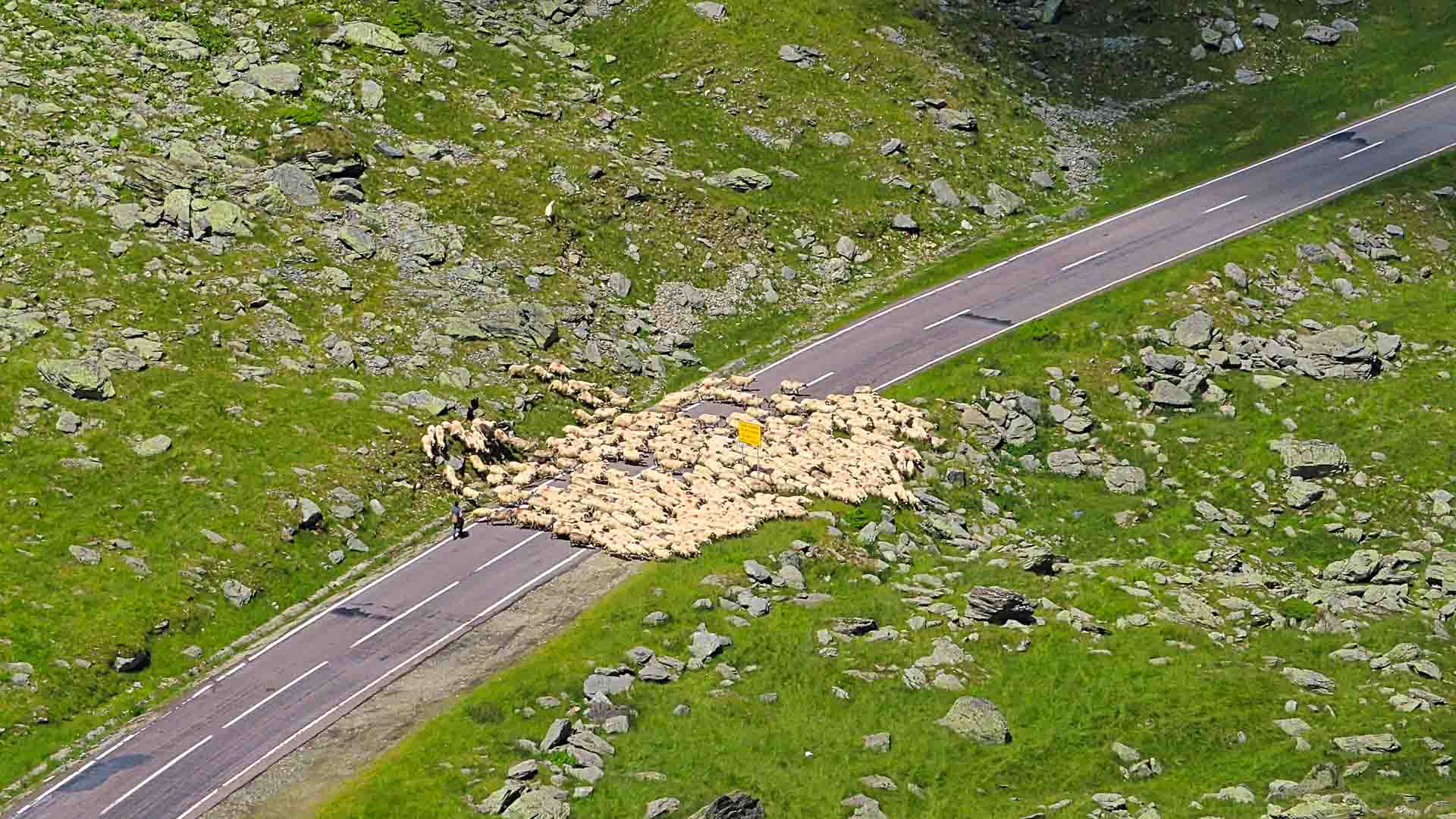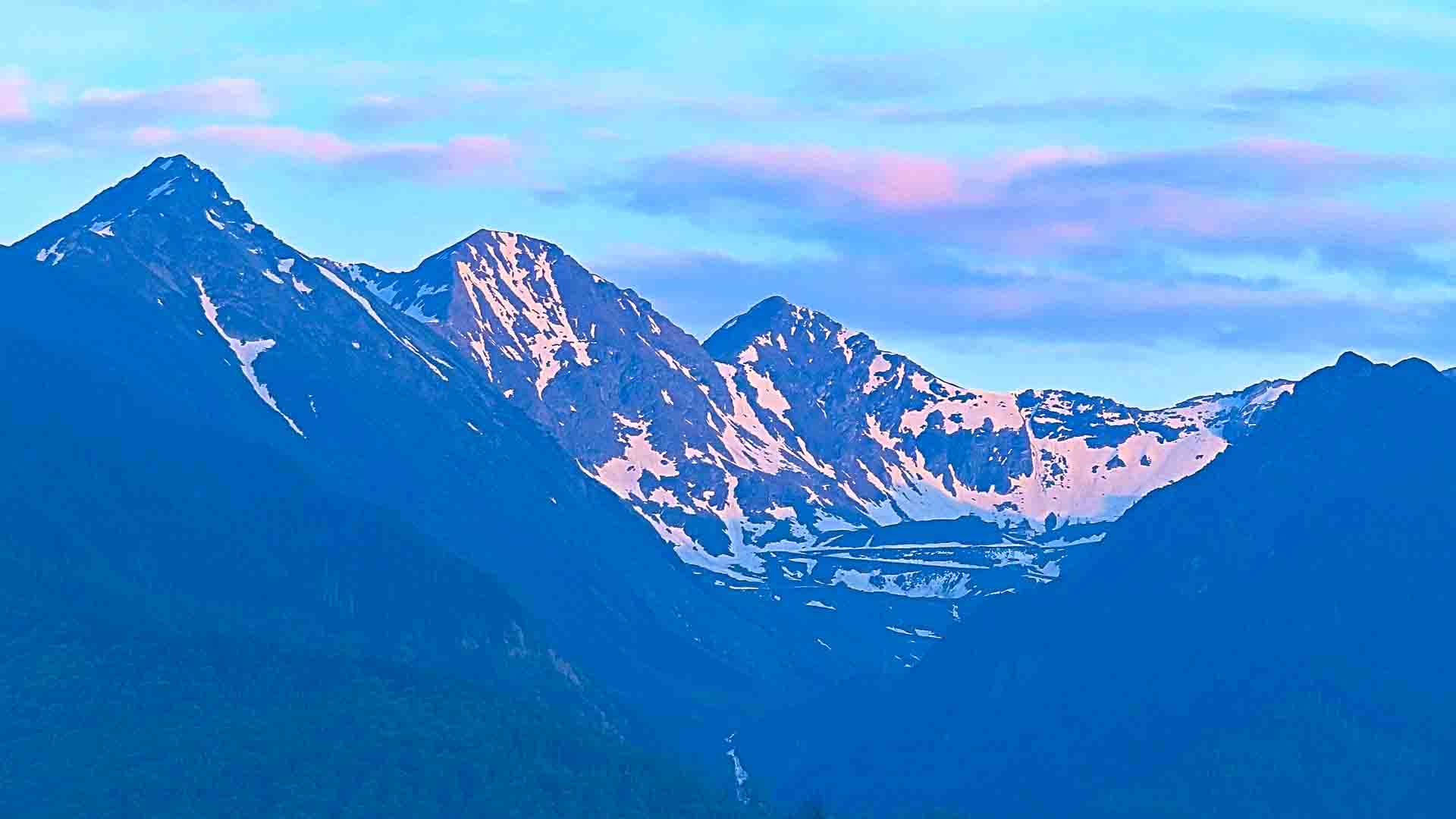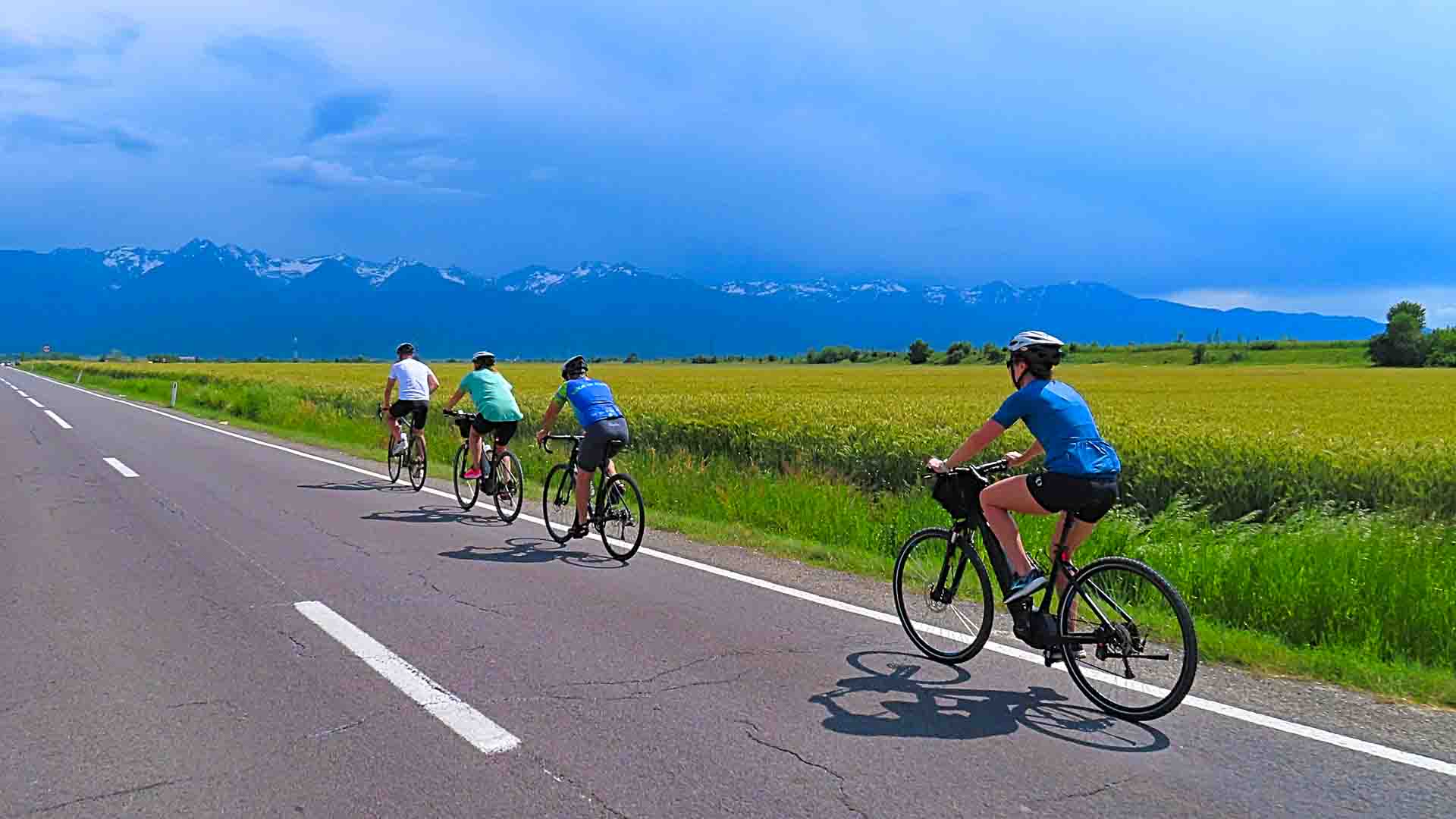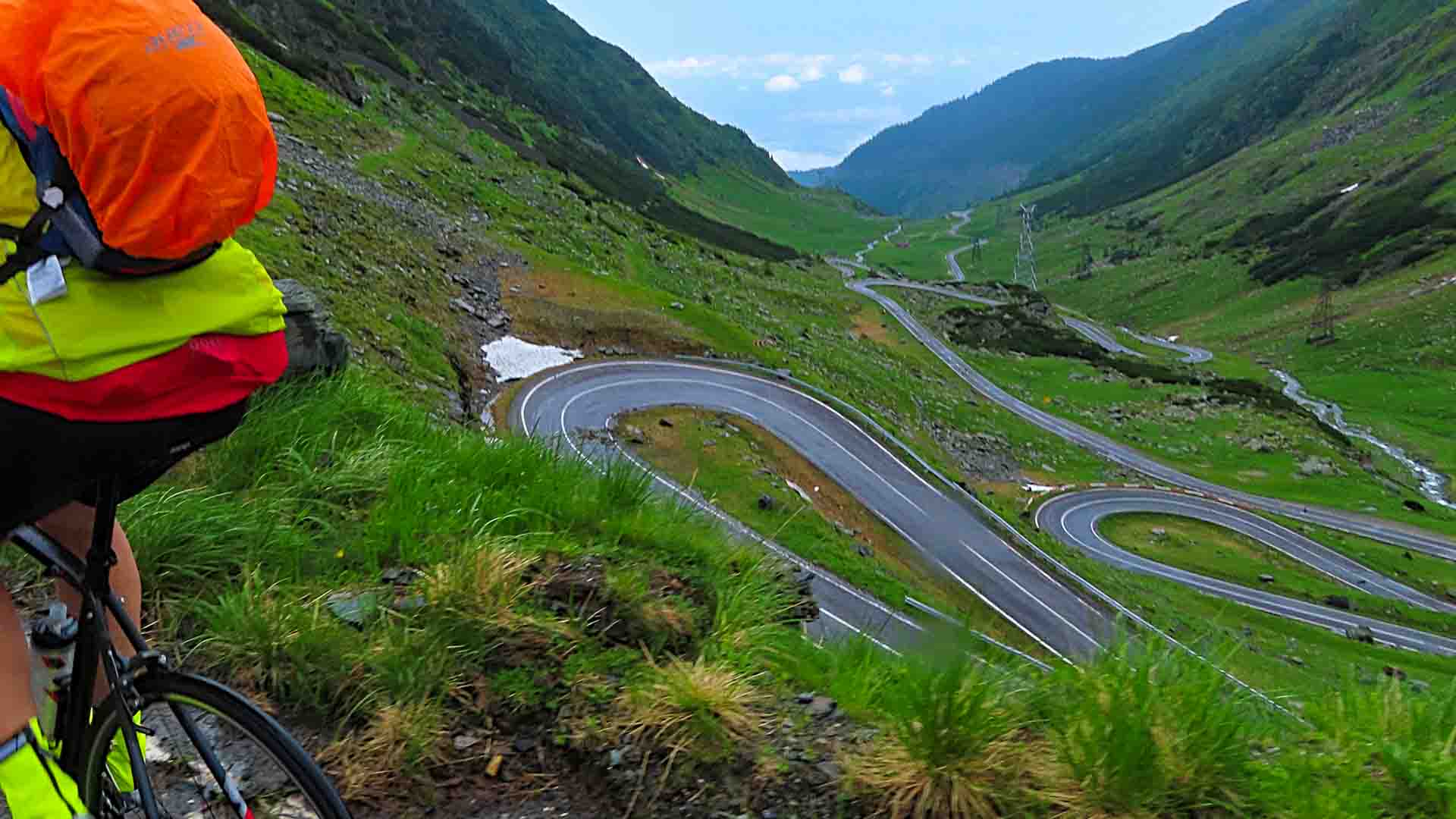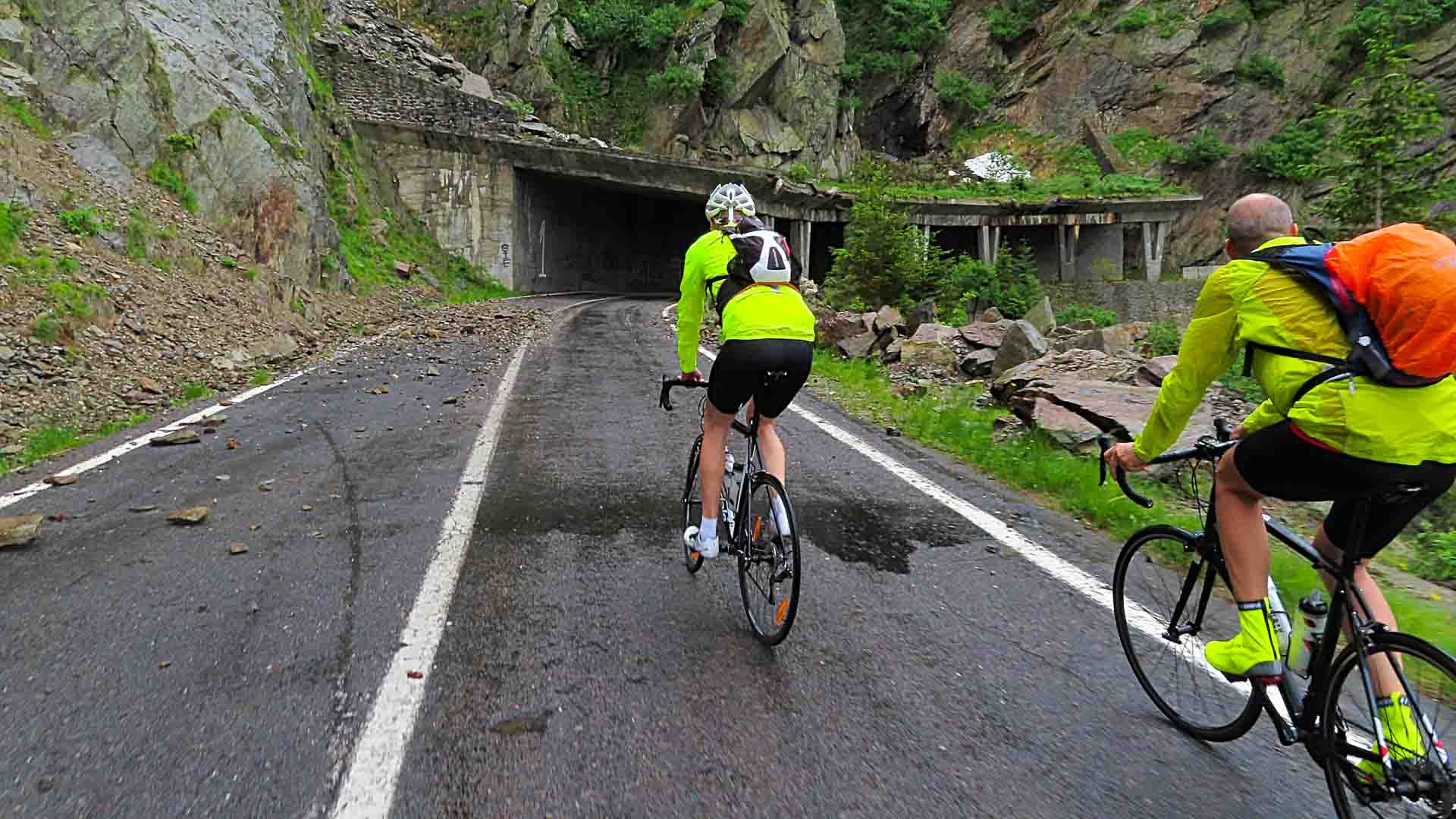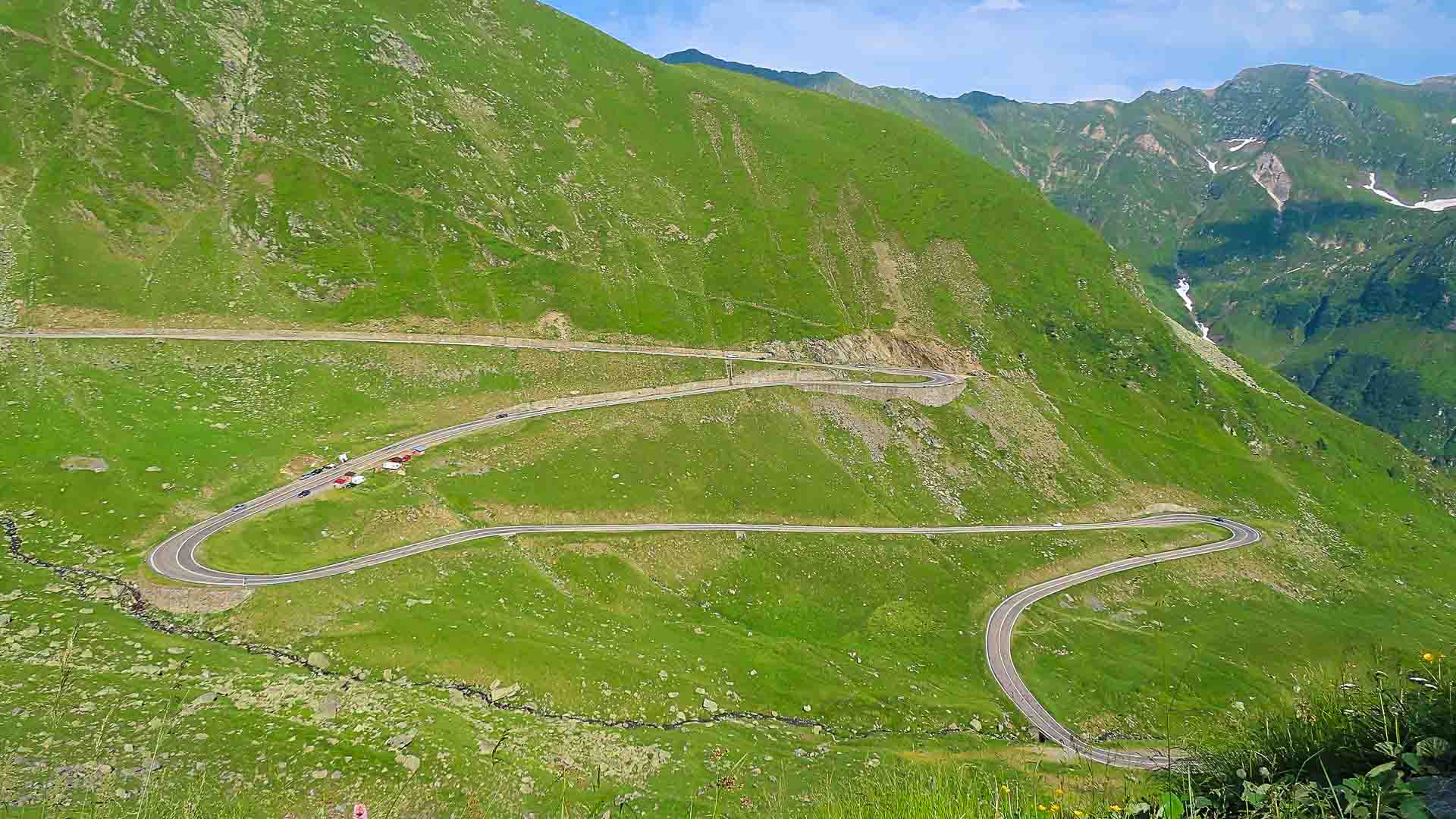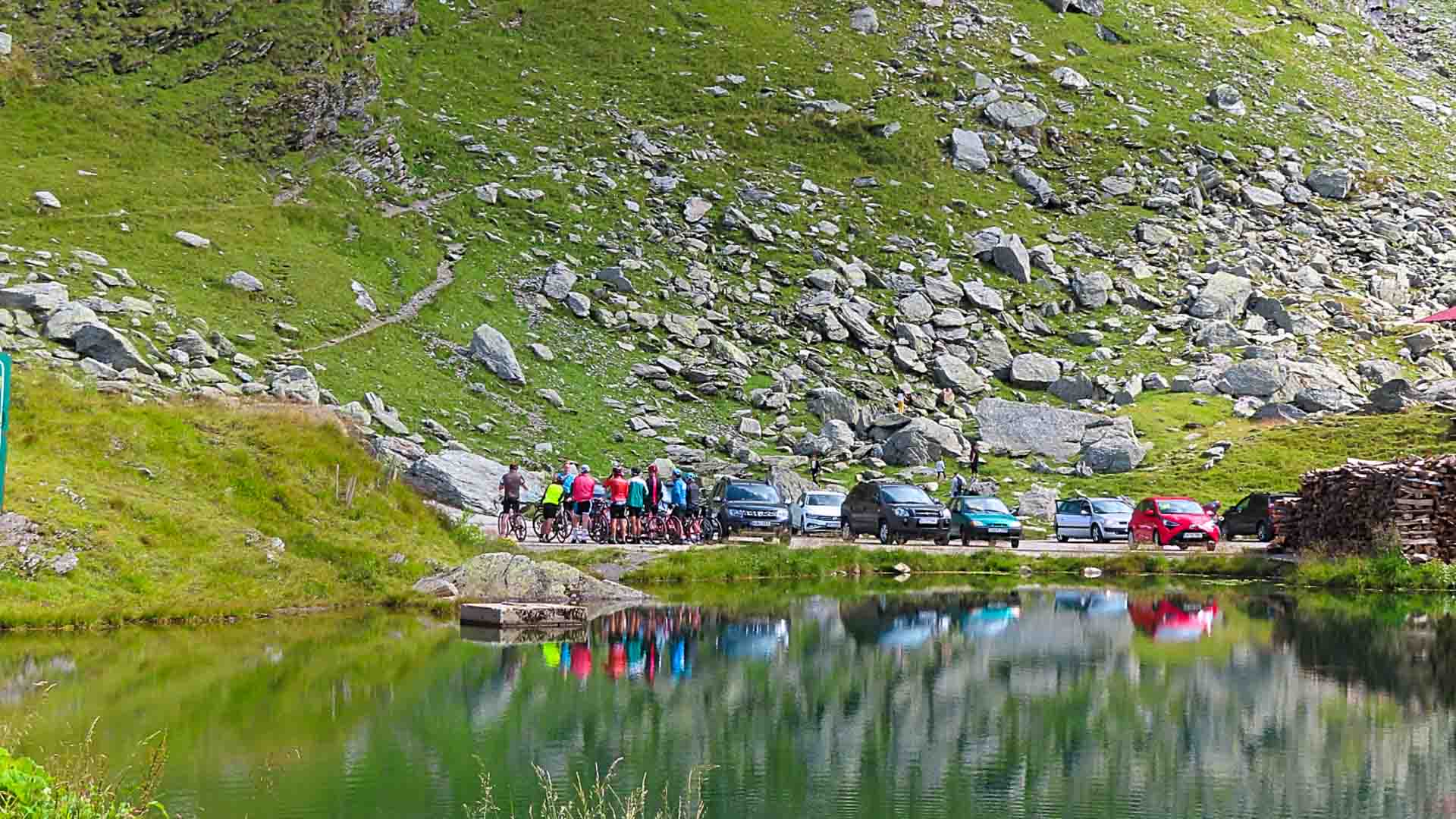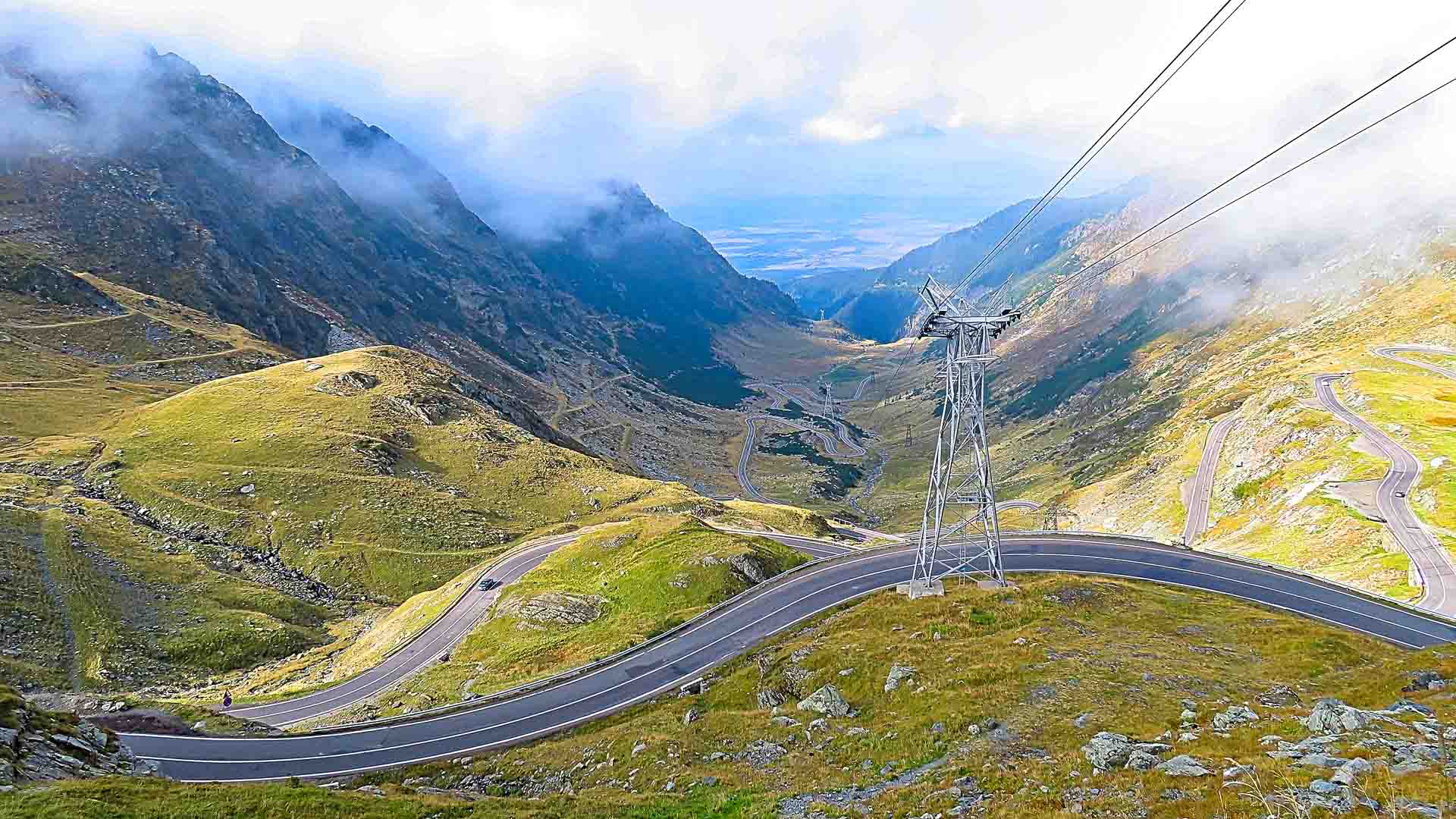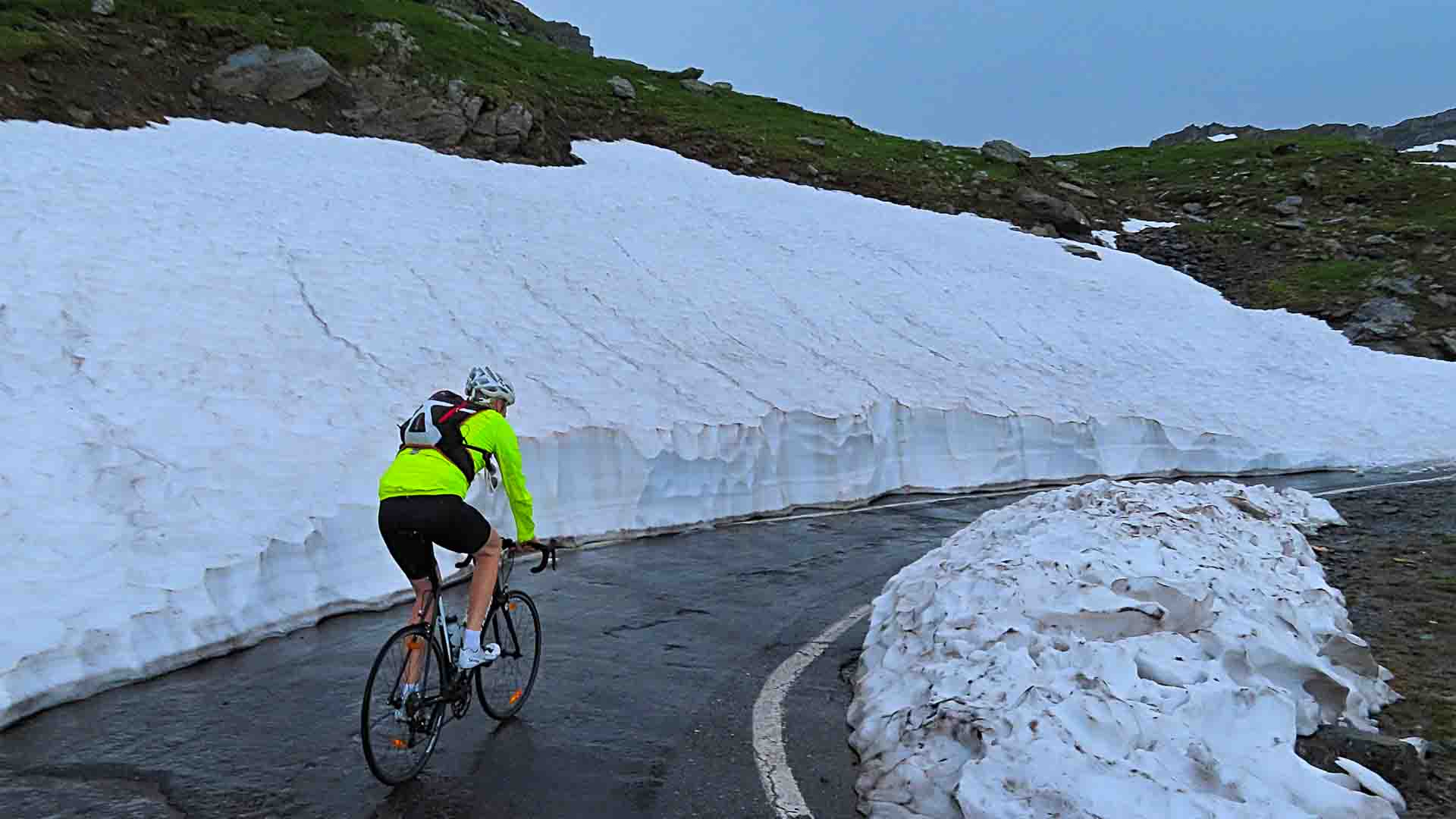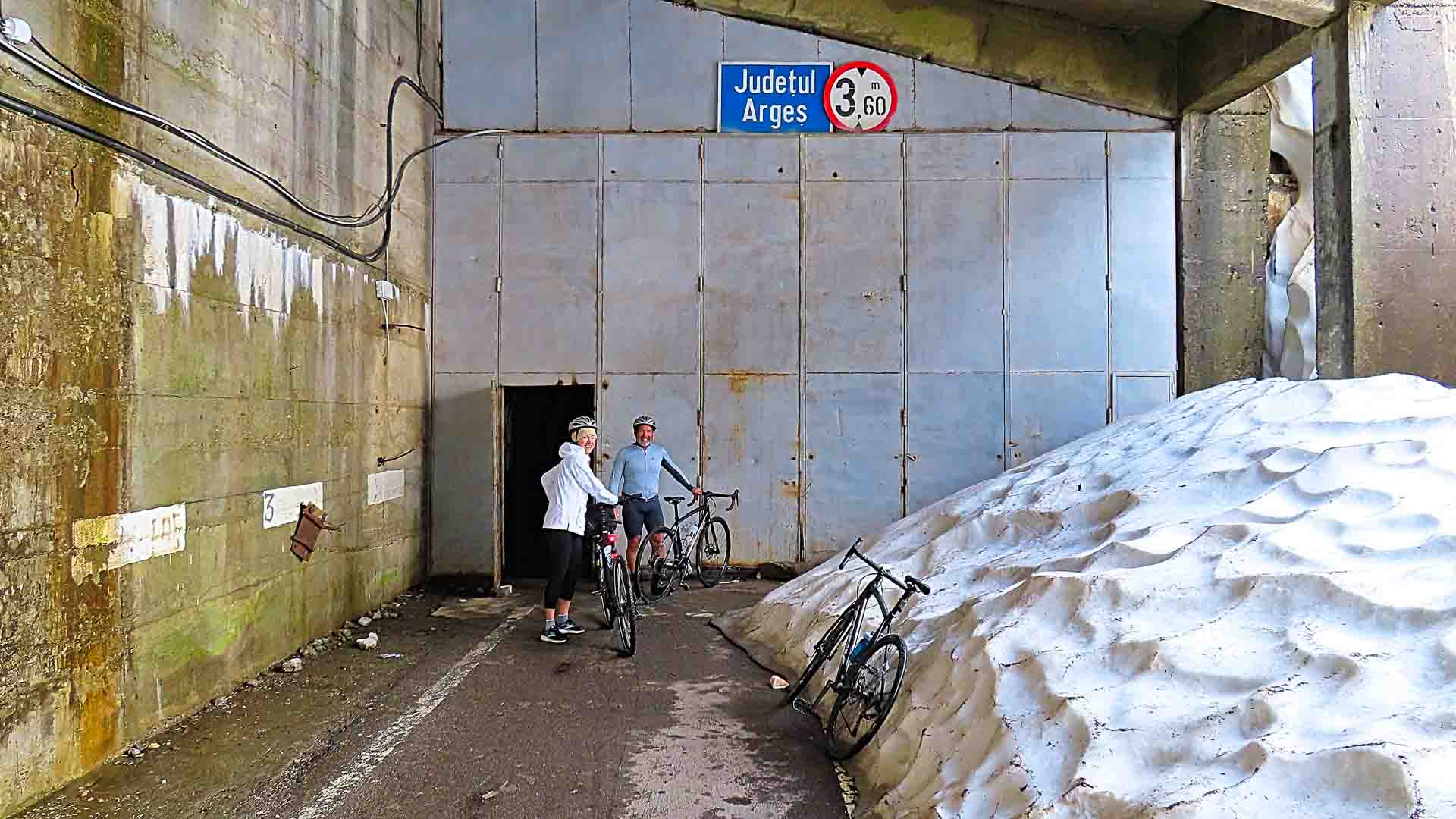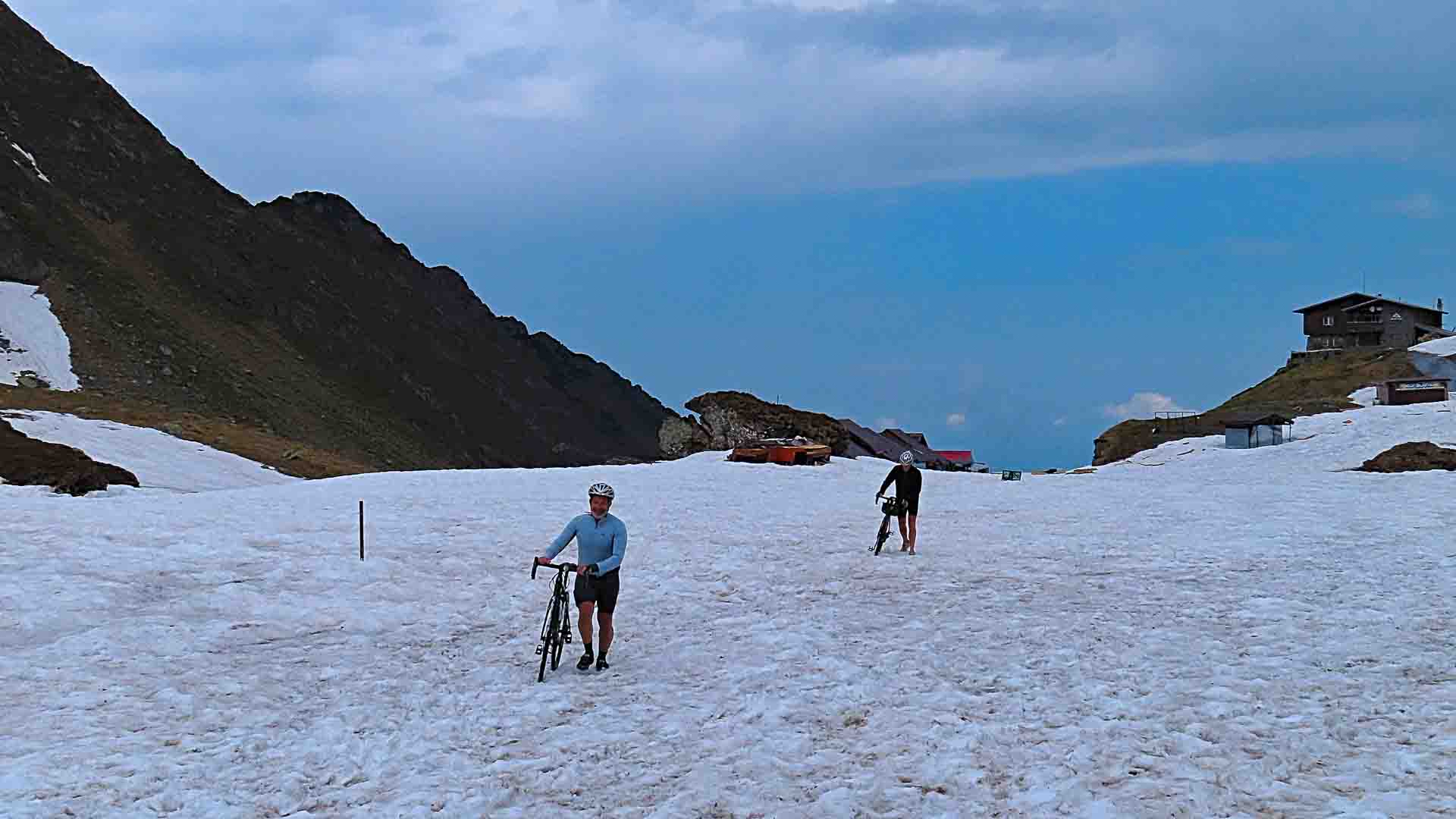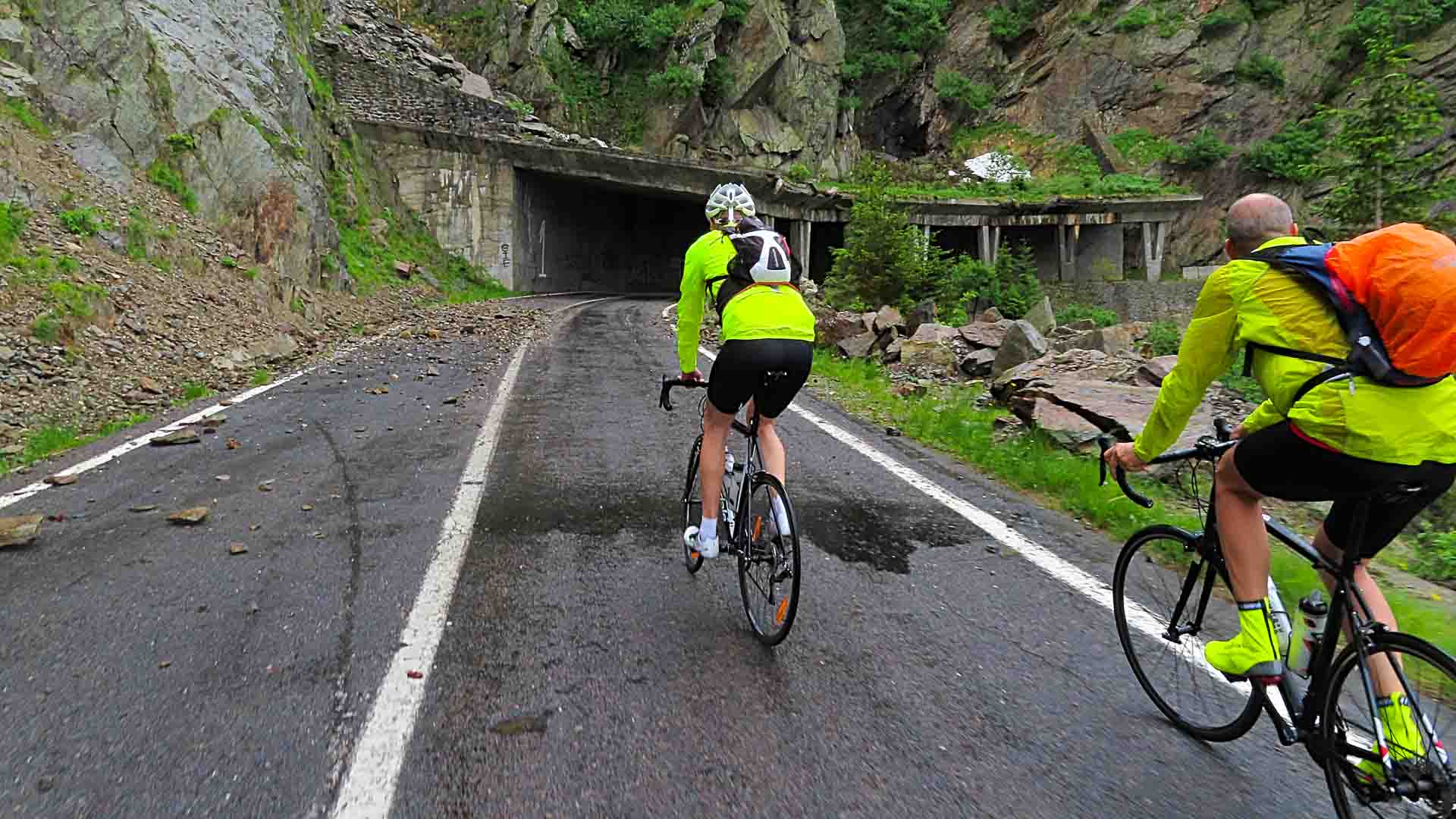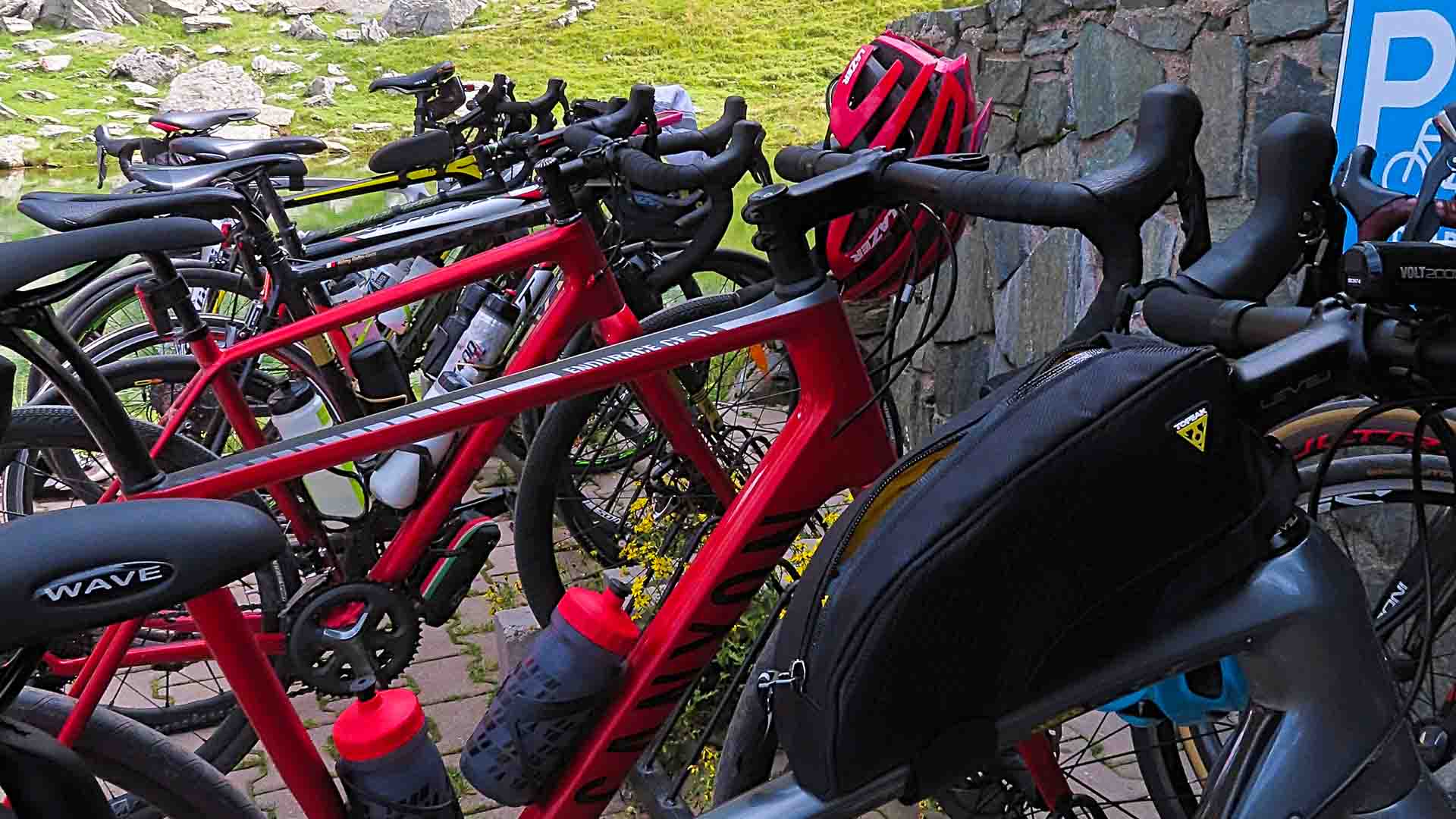If you visit Romania, cycling the Transfagarasan Pass is likely to be at the top of your must-ride list.
Declared the “best road in the world,” by Jeremy Clarkson, it’s a twisting snake of switchbacks that takes you to the top of one of Romania’s highest mountain passes. On the way, you pass through dense woodlands, glacial valleys, and the impressive Vidraru Dam.
Oh, it’s also very likely you’ll come across bears.
We’ve spoken to Romanian local, Ionut Maftei, about cycling the Transfagarasan. Ionut runs Bike in Time, a Romania cycling holiday company that specialises in trips to the Transfagarasan and across Romania. Below he shares his expertise on this iconic road.
Looking for our in-depth guide to cycling in Romania? Read this. Want tips on how to book a cycling holiday in Romania? Read this.
What are the highlights of cycling the Transfagarasan?
Ionut says “Constructed using tons of dynamite in the 1970s, the Transfagarasan is a very good looking road blessed with impressive curling switchbacks and surrounded by the towering Carpathian Mountains.
The route (especially the climb from the north side) is included in almost every Tour of Romania and Tour of Sibiu, but also in other competitions. The south side of the mountain is mainly used for triathlons and for other competitions, due to Vidraru Lake.
Note: it’s likely you will come across wild bears along the Transfagarasan. This year we’ve been to the Transfagarasan seven times. Each time we met at least six bears, but usually more than 10. They are wild animals, so of course there is potential for danger, but in our experience we’ve found they aren’t dangerous, just waiting for food because the tourists feed them. If you see a bear ahead, it’s a good idea to wait until there is a car alongside you to ride past, to shield you from the bear.”
Sponsor Message
Want help organising your Romania cycling holiday?
Bike in Time have been planning bike tours in Romania since 2007 and would love to help plan yours.
Head over to Bike in Time's website to start crafting your perfect Romania cycling trip.
Exclusive offer: use the code below and get 10% discount on any services that you book direct with Bike in Time before 16 January 2026.
What to expect
The Transfagarasan is the most well known road crossing the Carpathians.
Ionut says “The total length is 150 km, but for cycling, the focus is the 94 km section, from the village of Cartisoara on the north side to the village of Arefu on the south side. Most cyclists prefer to climb the north part and to descend the south, as the famous twisting switchbacks start right after Cartisoara village.”
Climb up the north side
Ionut continues, “The climb starts about 40km from Sibiu (more on Sibiu below), close to Cartisoara village.
Unlike the south side, where the really twisty parts starts closer to the top, here, the entire road is really twisty from around 14km in! It’s a steady 6-7% gradient and through the forest, but once you pass the Balea Waterfall the forest is left behind and you start to see almost to Sibiu (on a clear day).
After a few more twists, you get to this amazing view of the final climb, a never-ending S shape road, biting the hard rock of the mountains. It’s really impressive. Here, on top of the mountain, the twists are wider and you start to see what Clarkson meant when he said is the best road in the world!
Make sure you have a good camera on your phone because from here to the summit, there are some breathtaking viewpoints which give you amazing views. The snow stays on the road including in June, and sometime cars are not allowed to pass Balea Waterfall, so you might have empty roads to the top.
The road in the final kilometre, is cut into the rocky mountains until you see the final corner, the Balea Lake Cabin, and if you climb a little further, you will be at the amazing lake sitting on top of the mountain.
After this 30km climb with 1,500m of elevation gain, you can really enjoy that beer (or warm soup/tea) at the restaurant, with the glacial lake and the great mountains behind you. It really gives you a satisfaction like no other – that is until you start the descent!
Descent of Transfagarasan to the south
The start of the descent is a one kilometre long tunnel. When the tunnel is open for cars, there is no need for lights, but during the winter season (which might be until mid-June!), the tunnel lights are closed, so you need lights.
After that, get ready for a treat!
The first part of the descent (approximately 10 kilometres to “Capra Chalet”) is amazing, with corners and speed that make you feel like Valentino Rossi in a MotoGP race!
Once you are at the lake level, the 28 kilometres around the lake to the dam include some more descent (660 metres according to RWGPS) but also some climbing (630 metres). This section along the lake is also the place where you can meet most of the bears, but also foxes, dear, and other wildlife.
If you want to finish the ride at the dam, there are a few hotels nearby, some of them offering lake cruising and spa services.
From the dam you have another nice descent to the village of Arefu, crossing a few tunnels and viaducts. On the way you can also spot Poienari fortress, which is the real fortress built by Vlad the Impaler – who reigned in the historical region of Valachia.
Transfagarasan road ends at the town of Curtea de Arges, so you can enjoy another 30 km descent from Arefu to Curtea de Arges through villages. The route is not high traffic, so it’s fun to ride.”
Sponsor Message
Want help organising your Romania cycling holiday?
Bike in Time have been planning bike tours in Romania since 2007 and would love to help plan yours.
Head over to Bike in Time's website to start crafting your perfect Romania cycling trip.
Exclusive offer: use the code below and get 10% discount on any services that you book direct with Bike in Time before 16 January 2026.
Where to stay for cycling Transfagarasan
Ionut shares the following tips for where to stay when cycling Transfagarasan:
North side of the Transfagarasan
“The villages of Carta and Cartisoara have some good accommodation options, including camping and guesthouses. The most popular hotels/guesthouses are Casa Mosului and Casa de Oaspeti (in Cartisoara), and the Stone Mill Guesthouse (in Carta).
At Balea Waterfall, there’s Balea Cascada Hotel.
On top of the mountain, you can stay at Balea Lake Chalet and Paltinu Chalet.
South side of the Transfagarasan
Capra Chalet, Conacul Ursului Hotel, and Piscu Negru Hotel are all worth checking out.
Once you are at the dam, you have a few 4*hotels: Posada and Valea cu Pesti.
At the bottom of the climb, the La Cetate Chalet and Dracula Camping are the places for accommodation.
Curtea de Arges also has lots of accommodation options. It is one of Romania’s historical towns, so if you have the time to spend more time here, there are a few sites to visit, including the Monastery, with the graves of the Royal Family members.
For more cycling friendly accommodation in Romania, check out www.velopopas.ro.”
Tips for cycling the Transfagarasan
1. Check road conditions
The Transfagarasan highway is subject to closures due to unpredictable weather conditions, such as heavy snow and landslides. Before starting your ride, check for road closures and weather updates to ensure the road is open and safe for cycling.
The road is usually closed for cars from end-October to mid-June, due to wintery conditions. During this period, the road is not closed for hiking or cycling, but you do it at your own risk. You need to make sure you have good information, to avoid experiencing high snow on the top or other dangerous situations, such as rock falls or avalanches.
Apart from the winter season, during the summer season the road might be temporarily closed due the heavy rains, rock falls, or sport events. Some of them might not affect the cyclists, but it is good to be informed in advance.
2. Be prepared for the climb
The Transfagarasan is famous for its steep gradients; the RWGPS profile for the Transfagarasan climb (above) shows gradients up to 18%. Make sure you’ve got suitable gearing and are in shape for the climb. You can find more tips here.
3. Bring layers of clothing
The weather on the Transfagarasan can change rapidly, even during the summer. Pack layers of clothing to adjust to varying temperatures and weather conditions. It’s a good idea to have a waterproof and windproof outer layer as well. Our packing list might be useful (road list, gravel list).
4. Stay alert for traffic
The Transfagarasan can get crowded with vehicles, especially during weekends and peak tourist seasons. Remain vigilant and watch out for cars, motorcycles, and buses while cycling. Stay close to the right side of the road and use hand signals to indicate your intentions.
5. Watch out for the bears
You’re likely to come across at least a few bears. Dogs can also be an issue. See the note above.
6. Enjoy the views
Riding the Transfagarasan offers stunning vistas of the surrounding mountains and valleys. Appreciate the breathtaking landscapes and savour it.
What else to do along Transfagarasan?
If you want to spend more time around, or if you are together with a non-cyclist, here are a few touristic sites to visit before and during your trip along Transfagarasan:
- The ruins of the Cistercian Monastery in Carta
- The Badea Cartan folkloric museum in Cartisoara
- Balea Waterfall
- Balea Lake
- Vidraru Dam – the biggest dam in Romania
- Poienari Fortress
- Curtea de Arges Monastery – the place where the kings of Romania are buried
Looking for an organised tour?
Ionut says, “our two-day cycling trip that takes in both the Transfagarasan and Transalpina is really popular. You can find all the details here.”
Sponsor Message
Want help organising your Romania cycling holiday?
Bike in Time have been planning bike tours in Romania since 2007 and would love to help plan yours.
Head over to Bike in Time's website to start crafting your perfect Romania cycling trip.
Exclusive offer: use the code below and get 10% discount on any services that you book direct with Bike in Time before 16 January 2026.
Got a question for Bike in Time?
Fill out this form and we will pass it to Bike in Time who aim to reply (within 24 hours wherever they can!)
Got a question for Ionut?
Fill out this form and we will send it to Ionut. We aim to get you an answer within 24 hours where possible!First Published: 17 January 2024
This article includes details of products and/or services that we have used ourselves or which we would consider using. Some are paid features or include affiliate links or referral codes which we may earn commission from. As an Amazon Associate we earn from qualifying purchases. Please read our disclosure policy for further information.
All metrics in this article are approximate.
The contents of this website are provided for general information purposes only. It is not intended to amount to advice and you should not rely on it. You should carry out your own due diligence and risk assessments and take professional advice. Views expressed by interviewees or other users of this website do not necessarily represent our views. We make no representations, warranties or guarantees, whether express or implied, that the content on our website is accurate, complete or up to date. If you use any information or content on this website, download from, or otherwise obtain content or services through our website, it is entirely at your own discretion and risk. Epic Road Rides Ltd disclaims all liability and responsibility arising from any reliance placed on the information and content on this website. Find out more here.
Sponsor Message
Want help organising your Romania cycling holiday?
We’ve been planning bike tours in Romania since 2007 and would love to help you plan yours.
Get in touch and let's discuss the best holiday for you.
Head over to our website so we can start helping you craft your perfect Romania cycling trip.


